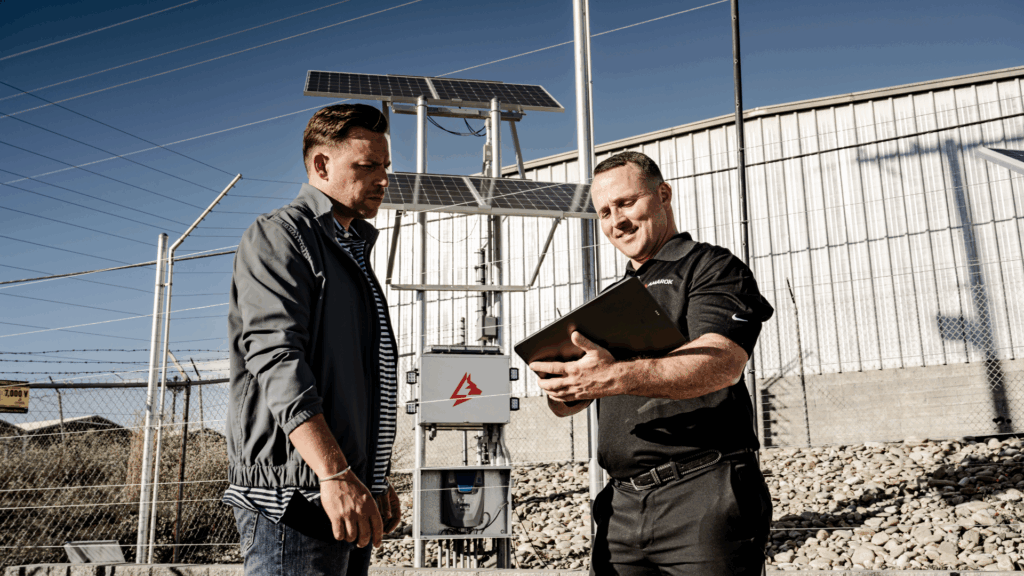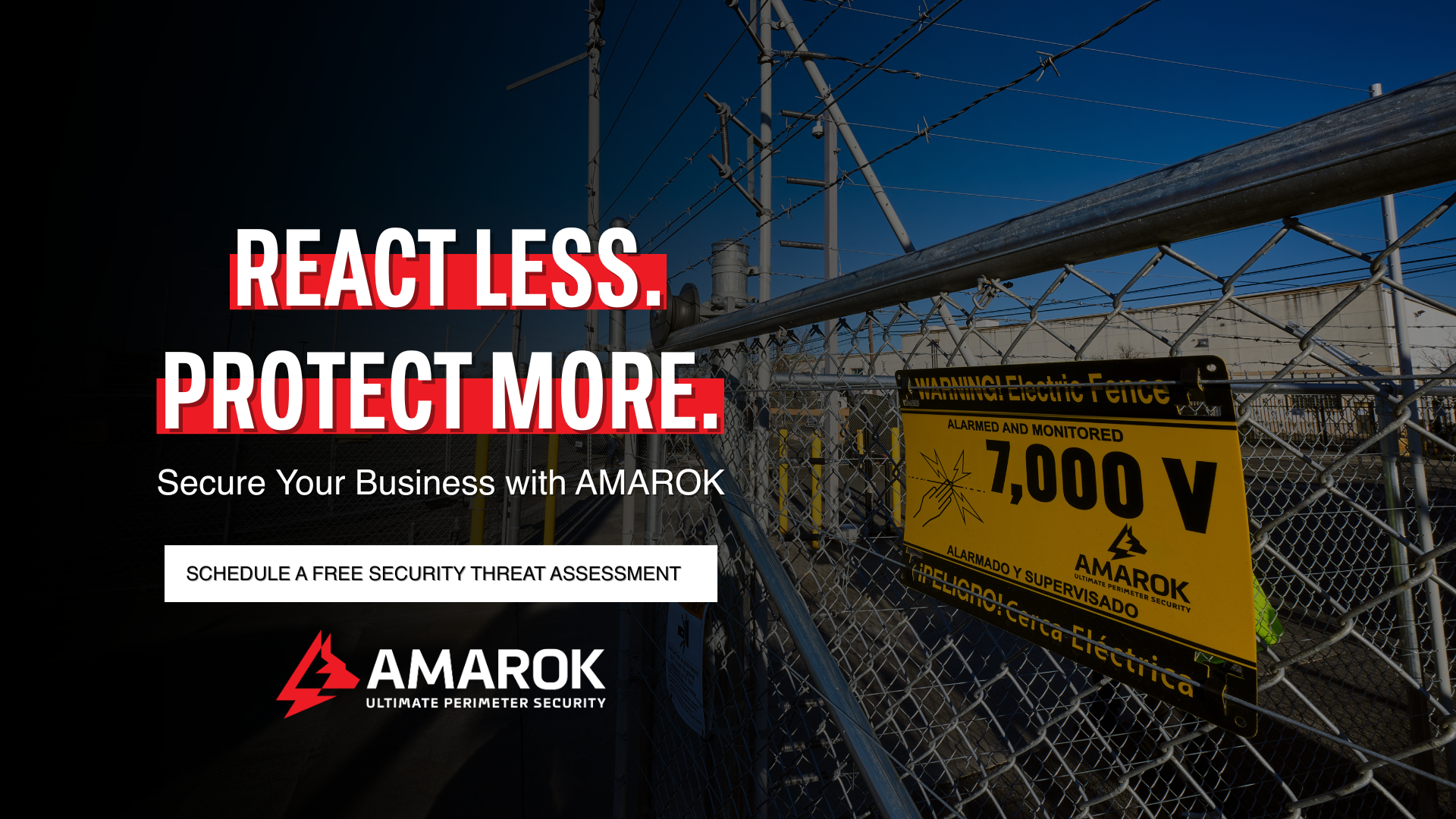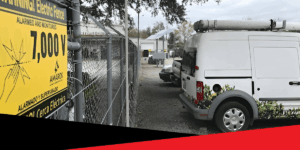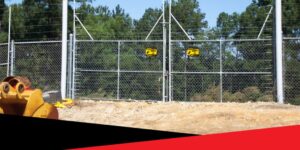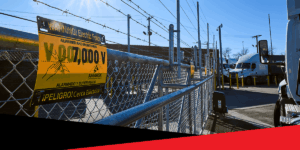5 Questions Leaders Should Ask Before Saying “No” to Site Security – or an Upgrade
Think about the last time you faced a security breach on your commercial property, whether attempted or fully executed. Did you feel prepared, or did panic fill your mind?
When it comes to commercial security, leaders tend to fall into two camps: the proactive, who invest ahead of problems, and the reactive, who wait until something happens to address the issue. If you lean toward the latter, you’re not alone. It’s challenging to justify a line item in the budget when the risks seem abstract and the ROI isn’t immediately apparent.

The truth is, every time you delay implementing perimeter security measures or upgrading current systems, you face hidden costs. The real question isn’t about the cost of security, but whether postponing it will lead to greater expenses later.
The Hidden Costs of Delaying Perimeter Security Implementation
Delaying proper commercial security implementation doesn’t save money, it multiplies risk. Whether you are relying on outdated or nonexistent systems, you are leaving costly vulnerabilities wide open, exposing your business to downtime, stolen assets, and liability claims. These risks don’t just disrupt daily operations; they drain profits, damage credibility, and can leave lasting scars on your company’s reputation.
Did you know that physical security breaches cost businesses on average $100,000 per incident (Market.us Scoop, “Physical Security Statistics 2025”)? This statistic highlights the rapid accumulation of consequences resulting from inaction. In contrast, investing in reliable perimeter security reduces risk and prevents costly mistakes. By strengthening your defenses now, you can avoid the escalating costs of reactive fixes and protect both your property and your reputation.
5 Questions Every Leader Should Ask About Their Commercial Security (or Lack of It)
If you’ve started wondering about the hidden costs that might be affecting your team’s outdated perimeter security or lack thereof it, it’s time to consider taking a more proactive approach.
Whether you already have security measures in place or none at all, it’s important to know where your vulnerabilities lie. Take this self-assessment by asking yourself these five critical questions to evaluate your current level of protection, identify hidden risks, and uncover opportunities to strengthen your security strategy.
1. What is the real cost of saying “not now”?
Postponing implementing security measures or enhancements often feels like saving money in the short term, but it’s important to see what you could be losing along the way. Recorded incidents demonstrate that when preventive measures aren’t in place, companies face compounded risks that impact operations, finances, and reputation.
Hidden costs can include:
- Direct losses from the value of stolen tools, vehicles, or equipment.
- Lost productivity by managers and employees pulled away from core responsibilities to handle police reports, cleanup, repairs, and insurance paperwork.
- Insurance impact due to higher premiums or denied claims if preventive measures weren’t in place.
- Customer disruptions, including missed deadlines, delayed deliveries, or project setbacks can damage relationships.
- Reputational risk via loss of trust with customers, partners, or employees when security is perceived as inadequate.
If any of the above has happened to you, note how much money, time, and resources you have lost in just one breach as an example to start calculating your total costs.
Here’s a real-life example of how hidden costs can impact operations:
Far West Recycling in Portland was dealing with the threats of arson, potential injury claims from trespassers, and repeated break-ins. They had tried security cameras, but the footage only recorded crimes rather than preventing them.
When the security team found out about AMAROK, they did a cost analysis of recent incidents and found a clear cost savings to install The Electric Guard Dog™ fence. Since installation, they have prevented multiple attempted security breaches on to their property. To learn the details, read the full case study.
2. What are our actual vulnerabilities right now?
It’s easy for leaders to assume their business is “secure enough,” especially if major incidents haven’t occurred recently. But assumptions are not absolutes. Crime trends evolve quickly, and what worked five years ago may leave gaps today. Outdated cameras, limited patrol coverage, weak fencing, or blind spots around entrances and parking lots can create opportunities for intruders.
A current risk assessment is the most effective way to uncover blind spots and quantify what’s truly at stake. Begin by inspecting the property, reviewing past incidents, and identifying gaps that exist (whether or not a break-in has occurred) to examine your current situation.
As you evaluate your position, ask yourself:
- When was the last time we conducted a full risk assessment?
- Do we have a plan in place to prevent repeat incidents?
- Where are our physical blind spots – old cameras, poor fencing, areas without surveillance?
- How would a disruption affect daily operations or employee safety?
- What would the reputational impact be if we suffered a publicized security breach?
When you shift the discussion from “Do we really need security?” to “Can we afford to ignore what we’ve found?” you will be more prepared for potential security threats. Ultimately, knowing your vulnerabilities is about protecting people, ensuring continuity, and preserving trust in your organization.
If you’d like to identify current security vulnerabilities on your property, schedule a free risk assessment with an AMAROK security expert today.
3. How would strong perimeter security systems improve efficiency and safety?
Security is often viewed only as a safeguard against crime, but the right systems do much more. A multi-layered approach that includes deterrence, detection, and rapid response not only strengthens protection but also improves the efficiency and resilience of your operations. The fewer disruptions your team faces from theft, vandalism, or unauthorized access, the more time and resources you can dedicate to core business goals.
Read more about how to calculate the potential ROI of an integrated security strategy here.
What if you could have an all-in-one platform that integrates video surveillance, alarms, electric fencing, and other security measures into a single system, remotely monitored through an app?
Think about the benefits you would experience, like reduced downtime, lower risk of surprise losses, streamlined processes, and even more predictable security costs compared to the unpredictable expense of dealing with an incident. Just as importantly, it gives leaders and teams peace of mind knowing that risks are managed before they become crises.
Integrated systems shift your strategy from reactive problem-solving to long-term planning. Instead of scrambling after an incident, you gain confidence in a system that protects people, operations, and assets – enabling you to focus on growth rather than recovery.
4. Would our customers and partners say we’re doing enough to protect their assets?
If you’re like most companies, security is as much about preserving trust as it is about preventing loss. Customers should assume their property, vehicles, or equipment are safe in your care. One preventable incident can erode that confidence, creating long-term damage to your credibility and competitive position.
Premises liability settlements can range from a few thousand to millions, depending on the severity of each incident (Maguire Law Firm, 2025). Liability settlements can include medical expenses, lost wages, and compensation for pain and suffering resulting from emotional distress.
If a theft or liability claim were to occur tomorrow, how would you explain your current security posture? Here’s what industry professionals look for:
- Preventive measures matter for insurance carriers. If security measures are nonexistent on your site or you rely solely on cameras or outdated locks, you may face higher premiums or be denied coverage due to negligence.
- In high-stakes sectors, regulators expect businesses to maintain a reasonable duty of care; therefore, weak security around high-value assets can be considered a compliance breach.
An effective security program demonstrates accountability to customers, insurers, and regulators, indicating that your business is committed to its responsibilities.
5. What ROI does affective perimeter security offer?
Affective, reliable security is ultimately an investment with measurable returns, so it’s worth your time to do a cost analysis.
Businesses that implement or enhance their perimeter protection see value in several ways, including:
- Loss prevention through avoided theft, liability, and damage costs.
- Insurance savings due to lower premiums and reduced exposure.
- Savings by potentially cutting or redeploying costly security guard hours.
- Operational continuity based on fewer disruptions and downtime.
On average, AMAROK customers achieve a 5x return on investment, proving that prevention is far more cost-effective than a reactive approach.
How Leaders Move from Reactive to Ready
Leaders who passively react to incidents take unnecessary risks, while those who prepare ahead strengthen their operations and anticipate problems before they occur. Asking the five questions above is the foundation of a proactive security strategy that protects all levels of your organization.
AMAROK’s comprehensive approach to deterrence, detection, and response helps businesses maintain a state of readiness. With solutions designed for compliance, efficiency, and peace of mind, leaders can anticipate risks instead of absorbing the costs of waiting.
If you’re tired of that familiar stressful feeling during a security breach, our team is here to help. The Proactive vs Reactive Expert Guide offers strategic approaches to perimeter security.
